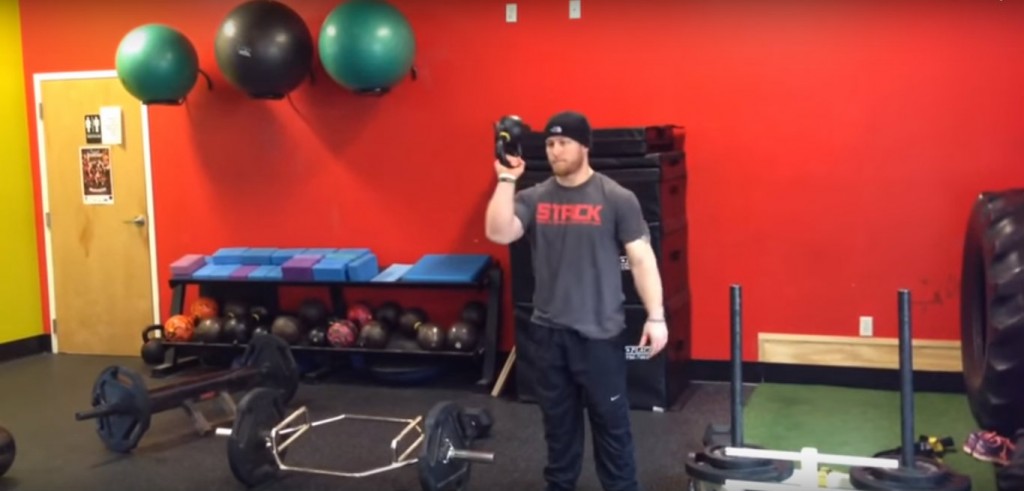
Numerous experts advise that if you want to turn healthy eating and fitness into a lifestyle instead of a short-term resolution, you should create habits that stick. But what if those strategies aren’t so winning?
Here, personal trainers reveal a handful of common habits that tend to do more harm than good:
1. RUSHING TO THE GYM
Maybe you’ve got a packed schedule and you’re just able to swerve into the parking lot 2 minutes before your personal training appointment or group class. You rush in, throw your bag in the corner and declare yourself ready to work out.
While that’s fine on occasion, it’s much better to arrive with time to shift. Not only does it give you time to warm up, but it also allows you to mentally focus — a factor that’s just as important as other elements of your workout.
2. SETTING UNREALISTIC GOALS
You sign up for next month’s Tough Mudder or a Spartan race, even though you haven’t been to the gym in a few years. But that’s just part of getting motivated, right? Not exactly.
While it’s great to set ambitious goals, it’s also crucial to create timeframes that work and allow you to see progress along the way, says James Tyler Dodge, certified strength and conditioning specialist and performance coach at Professional Physical Therapy in New York. He suggests articulating a big goal and working backward to see how you’re going to get there. That allows you to develop mini-goals — such as being able to run a mile, or do a pullup — that feel meaningful.
One study found that only about 44% of people who set resolutions make it past six months. Only 9% feel successful in achieving their resolution. Dodge says being realistic, making slow-but-steady progress and focusing on realistic goals can put you in the successful group.
3. SKIMPING ON RECOVERY
Although it may sound counterintuitive, sometimes taking a day off can make your next workout more effective. According to a study from the University of New Mexico, recovery can improve performance and also help you boost intensity.
Taking a recovery day — which can involve either rest or doing easy activities — may even help you recover faster from intense workouts, according to Dodge. He suggests putting recovery days in your schedule in advance, so you’re sure to take them. Those might be the days you do a restorative yoga class, go for a leisurely bike ride or weed the garden.
READ MORE > SCIENCE ANSWERS: ARE MASSAGES FOR LAZY SUNDAYS OR REAL RECOVERY?
4. DOING THE SAME WORKOUT AGAIN AND AGAIN
Even if you’re training for a specific event like a marathon or powerlifting competition, it’s best to mix up your workouts so you’re not overtaxing the same muscle groups, says Aaron Leventhal, NSCA-CPT, owner of Fit Studios in Minneapolis, Minnesota.
“If that happens, the supporting muscles won’t get the attention they need, and that could lead to weakness,” he notes. When that occurs, imbalances can crop up in the body, and that’s often a recipe for injury.
Also, you may stop seeing results if you’re doing nothing but hitting the treadmill for an hour every day. Your body becomes accustomed to certain exercises quickly, so changing it up can keep you on track to build muscle and endurance.
5. IGNORING YOUR NUTRITION
The old adage goes that muscles are made in the gym, but weight loss happens in the kitchen. But other goals are tied to healthy eating as well: gaining more energy, increasing athletic performance, boosting your immune system, decreasing inflammation and more.
If you ramp way up on fitness but still depend on heavily processed foods, you’ll have a tougher time getting where you want to go, says registered dietician and certified personal trainer Kim Hoban. She suggests focusing on nutrient-dense, whole foods — think healthy fats, lean protein, plenty of vegetables — and being aware of how and when you’re eating. For example, if it makes you feel queasy to eat a big lunch, break the meal down into two smaller portions eaten a few hours apart.
Most of all, increase healthy eating habits gradually, Hoban advises. It’s tempting to do a dramatic sweep-out of all the “bad” foods from your fridge, but research shows that small, easy changes done over time create more consistency and long-term results.
Whether you’re tweaking your meals, getting to the gym early or having a more meaningful discussion with your trainer about goals, it’s worth the effort to break bad habits. Once those are gone, you can put good habits in their place.
GEAR UP FOR YOUR NEXT WORKOUT
> Men’s Workout Clothes
> Men’s Athletic Shoes
> Women’s Workout Clothes
> Women’s Athletic Shoes
> All Workout Clothes
The post Trainers Reveal the 5 Worst Fitness Habits appeared first on Under Armour.
(via MyFitnessPal Blog)






